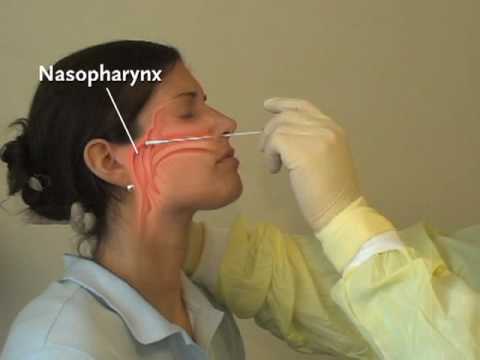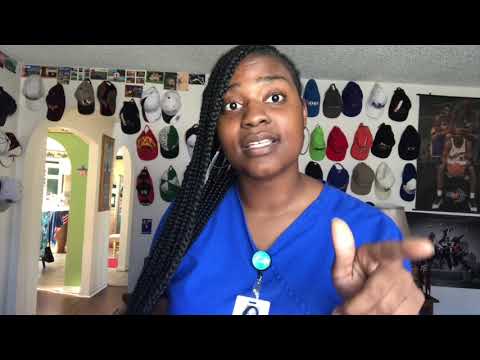Your Medical Assistant Portfolio: Table of Contents
Contents
- Introduction
- Why You Need a Medical Assistant Portfolio
- What to Include in Your Medical Assistant Portfolio
- How to Create a Medical Assistant Portfolio
- Tips for Creating an Effective Medical Assistant Portfolio
- How to Use Your Medical Assistant Portfolio
- The Benefits of Having a Medical Assistant Portfolio
- How to Showcase Your Medical Assistant Portfolio
- The Future of Your Medical Assistant Portfolio
- Conclusion
Every medical assistant student should have a portfolio to document their skills and experience. Here’s a suggested table of contents for your portfolio.
Checkout this video:
Introduction
A portfolio is a purposeful collection of student work that documents progress and achievement over time. Periodically reviewing and reflecting on your portfolio can help you identify your strengths, set goals, and chart a path for continued growth and development.
As you complete each rotation in your medical assistant program, you will have the opportunity to add artifacts that represent your knowledge, skills, and abilities (KSAs) to your portfolio. These artifacts may include items such as quizzes, exams, projects, presentation materials, journal entries, reflection papers, and peer evaluations.
In addition to artifacts, your portfolio should also include a table of contents that provides an overview of the contents of your portfolio and serves as a roadmap for anyone who is reviewing it. Your table of contents should be organized in such a way that it is easy to find specific pieces of evidence quickly and easily.
The table of contents for your medical assistant portfolio should include the following sections:
-Introduction: A brief overview of what is contained in your portfolio and why you have chosen to include each piece.
-Clinical Rotation 1: Documentation of your KSAs from clinical rotation 1. Include bothartifacts and reflective statements.
-Clinical Rotation 2: Documentation of your KSAs from clinical rotation 2. Include bothartifacts and reflective statements.
-Clinical Rotation 3: Documentation of KSAs from clinical rotation 3. Include bothartifacts and reflective statements.
-Professional Development: A record of professional development activities undertaken duringyour medical assistant program (e.g., workshops attended, webinars watched, etc.) as wellas any professional development goals you have set for yourself.
-Conclusion: A brief summary of what you have learned from creating your portfolio as wellas any plans you have for continued professional development after graduation.”
Why You Need a Medical Assistant Portfolio
As a medical assistant, you will most likely be required to maintain a portfolio of your medical assistant certification, medical assistant diploma, medical assistant transcripts, and other relevant information pertaining to your career.
A portfolio is simply a collection of your work that is organized in a way that is easy for potential employers to see. A portfolio can come in Many different formats, but the most common format for a medical assistant portfolio is a three-ring binder.
The table of contents is the first page of your portfolio. It should be well organized and easy to read so that potential employers can quickly find the information they are looking for. At a minimum, your table of contents should include the following sections:
*Education and Training
*Certifications
*Work Experience
*Professional Organizations and affiliations
*References
What to Include in Your Medical Assistant Portfolio
Your medical assistant portfolio is a tool you can use to impress potential employers and colleagues, and it can also help you keep track of your achievements and professional development over time. But what should you include in your portfolio? Here’s a quick guide:
* A copy of your resume: Include an updated copy of your resume in your portfolio so that potential employers can see your latest qualifications and experience.
* Letters of recommendation: Collect letters of recommendation from past employers, colleagues, or supervisors who can speak to your skills as a medical assistant.
* Writing samples: If you have any writing samples that showcase your ability to communicate effectively or provide instruction, include them in your portfolio. This could be anything from a patient education handout to a blog post you wrote about a medical topic.
* Documentation of continuing education: Keep copies of certificates or transcripts from any continuing education courses you’ve completed, as well as any professional development activities such as conferences or workshops you’ve attended.
* A list of awards and honors: If you’ve won any awards related to your work as a medical assistant, or been recognized by an organization for your contributions to the field, make sure to include this information in your portfolio.
By including these items in your medical assistant portfolio, you’ll be able to put your best foot forward when seeking out new opportunities in the field.
How to Create a Medical Assistant Portfolio
A medical assistant portfolio is a three-ring binder that contains verification of your skills, training, experience, and credentials. The portfolio is an important tool that you will use throughout your career to keep track of your progress and accomplishments. It will also be useful when you are job-hunting or applying to programs for further education. Creating a portfolio may seem like a daunting task, but it is actually fairly simple. Here are the steps you need to take:
1. Decide what format you want your portfolio to be in. You can choose between a physical portfolio, which is a three-ring binder that contains physical copies of your documents, or an electronic portfolio, which is saved on a computer or other electronic device.
2. Choose what documents you want to include in your portfolio. Some common items that are included in medical assistant portfolios are resumes, licenses and certifications, transcripts, proof of clinical skills, letters of recommendation, and samples of projects or assignments that you have completed.
3. Collect all of the required documents and organize them in the chosen format. If you are creating a physical portfolio, make sure to use acid-free paper so that your documents will not yellow over time.
4. Update your portfolio regularly. As you complete new training courses or receive new licenses and certifications, be sure to add these items to your portfolio so that it remains up-to-date.
Tips for Creating an Effective Medical Assistant Portfolio
Your medical assistant portfolio is essentially your resume in physical form. It is a collection of everything you have accomplished during your medical assistant training and career, including certifications, licenses, awards, transcripts, letters of recommendation, and more.
Creating an effective portfolio can be daunting, but it is well worth the effort. A well-crafted portfolio will help you stand out from the competition and secure the job you want. Here are some tips for creating an effective medical assistant portfolio:
– choose a professional-looking portfolio case or binder
– use clear page protectors to keep your documents in good condition
– include a table of contents so employers can easily find what they are looking for
– highlight your most relevant accomplishments
– update your portfolio regularly to ensure it is current
following these tips will help you create a professional, stylish portfolio that will impress potential employers and give you a competitive edge in the job market.
How to Use Your Medical Assistant Portfolio
Your medical assistant portfolio is an important tool that you will use throughout your career. It is a collection of documents and information that demonstrate your clinical and administrative skills, as well as your professional development.
A well-organized and up-to-date portfolio will make it easier for you to find the information you need when you need it. It will also impress potential employers and help you stand out from the competition.
This guide will show you how to create a medical assistant portfolio that will be an asset to your career.
What Is a Medical Assistant Portfolio?
A medical assistant portfolio is a collection of documents that demonstrate your clinical and administrative skills, as well as your professional development.
The contents of your portfolio will vary depending on your level of experience and the type of position you are seeking. However, all portfolios should include certain essential items.
Essential Items for Your Medical Assistant Portfolio
-A copy of your resume or CV
-A list of your professional qualifications, including certifications and licenses
-Samples of your work, such as patient care notes or reports, charts, graphs, or spreadsheets that you have created
-Letters of recommendation from past employers or instructors
The Benefits of Having a Medical Assistant Portfolio
A medical assistant portfolio is a great way to showcase your skills and experience to potential employers. It can also be a useful tool for keeping track of your continuing education and professional development.
Having a portfolio can also be helpful if you decide to change careers or pursue additional training. By having all of your information in one place, you can easily refer back to it when you need to update your resume or fill out applications.
The table of contents for a medical assistant portfolio should include:
-A list of your Education and Training, including any certification or licenses you hold
-A list of your Work Experience, including dates, employer name and contact information, job title, and a brief description of your duties
-A list of any Professional Development courses or seminars you have attended
-A section on any Volunteer work you have done related to healthcare
-A list of any Healthcare-related awards or honors you have received
-A copy of your current resume
How to Showcase Your Medical Assistant Portfolio
A medical assistant portfolio is a great way to showcase your skills and experience to potential employers. But what should you include in your portfolio?
Here is a suggested table of contents for your medical assistant portfolio:
1. Cover Letter: A professional cover letter addressing the reader by name (if known) and clearly stating your desired position.
2. Resume: Your current resume, highlighting your skills and experience as they pertain to the medical field.
3. Letters of Recommendation: Include letters of recommendation from past employers, colleagues, or instructors that speak to your abilities as a medical assistant.
4. Writing Samples: Include writing samples that demonstrate your ability to communicate effectively in a medical setting. These can be patient education materials, discharge instructions, or other writings you have produced in a professional capacity.
5. Documentation of Certifications & Training: Include copies of any relevant certifications or training documentation that you have received. This could include CPR certification, basic life support certification, immunization records, etc.
6
The Future of Your Medical Assistant Portfolio
When discussing the future of your medical assistant portfolio, it is important to consider the ever-changing landscape of healthcare and technology. With the influx of new electronic health records (EHRs) and electronic medical records (EMRs), it is becoming increasingly important for Medical assistants to be able to document patient encounters accurately and efficiently. In addition, as the Baby Boomer population ages and more people are living with chronic conditions, the demand for Medical Assistants is expected to grow significantly in the coming years.
Your medical assistant portfolio should be a reflection of your unique skills and experience, as well as a representation of your professional development over time. As you advance in your career, you will likely want to add new certifications, licenses, and accolades to your portfolio. The following are some tips for maintaining an up-to-date and well-organized medical assistant portfolio:
1. Create a Table of Contents
2. Include Your Resume
3. Highlight Your Unique Skills and Experience
4. focus on Your Professional Development
5. Use an EHR or EMR Template
6. Keep Track of Your Documentation When starting your first job as a soon-to-be certified or licensed MA, you will likely be asked by your employer to provide proof of certification or licensure before you can start working. If you have not yet received your certification or license, be sure to include a copy of your application in your portfolio as well as any relevant documentation from your training program
Conclusion
In conclusion, a portfolio for a medical assistant may include Personally Identifiable Information (PII), Medical records resumes, letters of recommendation, and licenses. The portfolio should demonstrate the medical assistant’s ability to perform their job and meet the demands of the healthcare industry. Employers may also request a portfolio in order to get to know an applicant on a more personal level.







